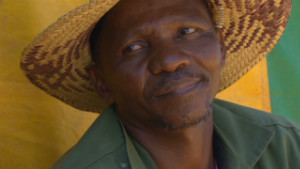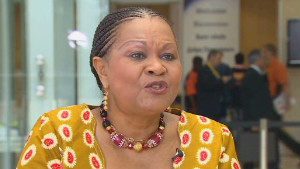On December 21, 2012, the Nigerian Railway Corporation (NRC)
began the long-awaited movement of passengers and haulage of petroleum
products along the western axis from Lagos to Kano. SAMSON ECHENIM, who
was onboard the maiden train trip from Lagos to Kano writes that the
feat opens a new chapter in the history of the nation’s transportation
system.
The children wailed and waved in excitement, coming rather too close
to the snaky moving train, while their parents watched from just outside
their mud or grass-made huts. It was a sight long experienced for the
parents, while most of the children were just beholding the train for
the first time ever. It has been nearly a decade since the trains last
passed the tracks to Kano all the way from Lagos.
It was the first travel on rail, conveying hundreds of passengers
from Lagos to Kano by the Nigeria Railway Corporation (NRC) after
rehabilitation works that cost the federal government N24.3 billion were
completed on the 1126-kilometre Western corridor Lagos-Kano railway
line.
The minister of transport, Sen. Idris Umar had the previous morning,
December 21, 2012 in Lagos flagged off the much awaited Lagos-Kano
Intercity Train Services, commuting thousands of passengers along the
western axis through to Kano while the Lagos State Governor, Mr.
Babatunde Fashola, same day, unveiled haulage of petroleum products by
railway, which lifted 450,000 litres of diesel billed from Lagos to Offa
that first day.
The event attracted stakeholders such as the Lagos State Governor,
Babatunde Fashola, his transport commissioner, Kayode Opeifa, SURE-P
representatives, past MDs of NRC, the leadership of the Nigeria Labour
Congress, freighters and oil marketers, among others, who expressed joy
that the good old days of the NRC were gradually crippling in again, as
the 10-tanker wagon and a 20-coach locomotive left the Ebute-Meta
Terminal to Offa and Kano respectively.
“The inter modal transport system is one thing that the government of
Lagos State has strived to build in the state to make movement a lot
easier, as well as stir up economic growth. We are happy that by the
rehabilitation of Lagos-Kano rail route, the federal government is
thinking along same line for the betterment and growth of this great
nation,” said Governor Fashola, who was represented by his Lagos
Metropolitan Area Transport Authority (LAMATA) boss, Dr. Dayo Mobereola.
The maiden trip was made by 25-horse power locomotive on which 20
coaches were anchored. The computerised engine has a capacity to pull as
much as 45 loaded coaches, meaning it could carry over 4000 passengers
if the coaches were all loaded with people. The new system has economy,
restaurant and bar, air-conditioned sleeper and seater-coaches, baggage
vans and effective power generating sets to alternate energy supply for
the comfort of travellers.
Moving through the Western Corridor of the country, the zealous train
negotiated doggedly and diligently through the nation’s vegetations
breaking its seasonal boundaries as it left the wet woods of the Western
part of the country through the shrubby lands of the Central region to
the dry savannahs of the North and berthing at stations designed to
include all state capitals and all major towns in the axis, such as
Abeokuta, Ibadan, Osogbo, Ilorin, Kutienji, Minna Zaria and Kaduna,
before it finally arrived the Kano Terminal destination on Saturday.
“The journey may be long, but the experience tells more of fun. It is
a lot cheaper to travel by railway and one has no fear of any mishap.
To say the truth, I had missed travelling by train all these years and
I’m happy that the service is now back. For anyone who has the time and
for traders and passengers with heavy loads, the train service is highly
recommended,” said Isa Yusuf, a Minna-based businessman, who boarded
the train from Lagos to Minna.
A New BeginningFor the managing director of the
NRC, Engr. Adeseyi Sijuwade, the maiden train trip from Lagos to Kano is
very symbolic in that it heralds tidings of hope for Nigerians. It is
the beginning of a new system of things that will boost the country’s
economic terrain in no small measure.
He said, “This is very symbolic in that from now on what you will see
is steady movement of freight and passengers by rail. We have already
quite a number of customers falling on each other to move their freights
by rail—likes of Nigeria Flour Mill, Lafarge WAPCO, Total, Dangote and
A-Z, among others.
“What we are going to experience in the next couple of weeks is that
major influx of passengers from the road to rail and we are starting off
with the weekly service from Lagos to Kano, departing Lagos Iddo
Terminal 9am every Friday and departing Kano station 9am every Monday.
We are starting with this service, passing through all state capitals in
the western axis and that will be in addition to the Lagos –Ilorin
service that will keep running.
“We also have the Kano to Kaduna train services, which has become a
very popular service and we will continue that. Gradually, we will step
up the speed, availability and reliability of these train services. We
are going to grow organically because it is important that we ensure
that every single service is safe, reliable and with reasonable
comfort.”
The Federal Ministry of Transport had in 2009 awarded contracts for
the rehabilitation of the long-awaited flagship project to CCECC and
Constain West Africa Plc. The Chinese corporation got the 488-kilometre
Lagos-Jebba axis, while Constain was awarded the 638-km Jebba-Kano end.
However, the project suffered a major setback, leading to the
withdrawal of Constain from the project. Constain had to involve the
CCECC in “a strategic partnership when it was obvious that it could not
deliver on time, due to a major challenge at the Akire Bridge where
flood washed away part of the tracks several times.
In preparation for fuel haulage by rail, the NRC had in February last
year imported 20 units of pressurised fuel tanker wagons with a
capacity of 40 tons and said it had plans to import additional 50 when
the project kicks off. With such capacity, the 20 tank wagons are
expected to take off about 30 trailers from the roads as the system
begins operation.
Even though the system remains steps away from the modern rapid rail
system seen in the first and some second world countries, those who
witnessed the inauguration of the Lagos-Kano Intercity Train Services
and passengers who boarded the train from Lagos to Kano were quick to
shower eulogies on the government and the NRC.
Stakeholders had said the revival of the hitherto moribund railway
infrastructure was a litmus test on the commitment of the Goodluck
Jonathan-led administration.
NRC’s managing director, Engr. Adeseyi Sijuwade, who noted the
unceasing federal government support to ensure success of the landmark
project, said the opening of the Lagos-Kano Rail route would no doubt
bring a lot of socio-economic benefits to the development of the
country, such as provision of employment, enhancing trade and commerce
as well as taking pressure off the overstressed roads.
Govt promises moreAccording to the minister of
transport, Sen. Idris Umar, the successful rehabilitation of the
1126-kilometre Lagos-Kano railway line and other railway projects going
on all over the different corridors in the country are concrete
indications of the President Gooodluck Jonathan’s administration’s
commitment to enhance the transport sector.
Speaking at the flag-off ceremony of the project, which was
part-funded by the Subsidy Reinvestment Programme (SURE-P) Umar said,
“This segment which holds the key to the development of the economy of
the nation from the commercial ports city of Lagos to the commercial hub
of Northern Nigeria in Kano is seen as vital to the start-off of the
transformation of the Nigerian economy. Government therefore invested
heavily to ensure the completion of the rehabilitation of the rail line
for freight and passenger services.”
He further disclosed that numerous rehabilitation of railways across
the country along various corridors, as well as feasibility studies for
the new standard gauge rail in several areas, which were expected to be
developed through public-private partnership, would place the country in
great stead for global competition in transportation.
Challenges ahead and need for private sector involvementDespite
this huge success recorded by the NRC, obvious challenges are still
staring at the face of the railway corporation. More engines are needed
and the coaches are far from being enough. Again, a quick metamorphosis
from the narrow gauge system, through the standard gauge and to the
rapid train system needs to be played out. But the NRC boss revealed a
smart plan to tackle the challenge of inadequate coaches.
Appealing to the government, especially the National Assembly for
more funds, Engr. Sijuwade said, “We face a number of challenges, such
as insufficient locomotives and rolling stock and inadequate skilled
manpower, due to funding constraints.
It is true that we do have some challenges particularly in the area
of coaches and wagons, but we are doing all we can to continuously
rehabilitate what we have and most importantly we are grateful to the
federal government under the leadership of president Goodluck Ebele
Jonathan, which has actually given the approval for the manufacturing of
brand new modern coaches and more units are expected to be delivered
soon.”
Amidst the euphoria of what appears to be NRC’s milestone achievement
and a historic bounce back, stakeholders have advised that the
corporation ensures regular maintenance of the tracks and sidelines to
avoid the mistake of the past. They also urged a quick review and
amendment of the NRC Act by the National Assembly to ensure investment
by the private sector in the nation’s railway development.









 (
(






